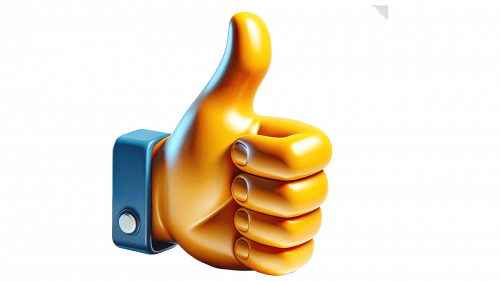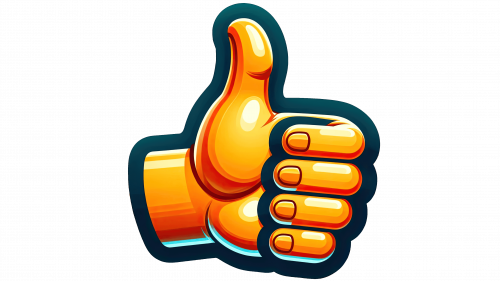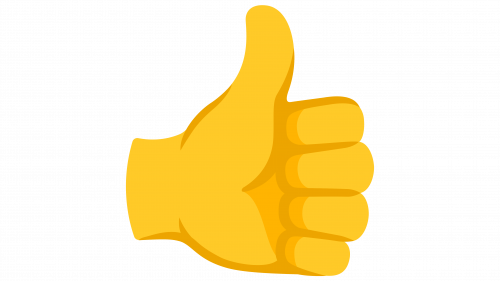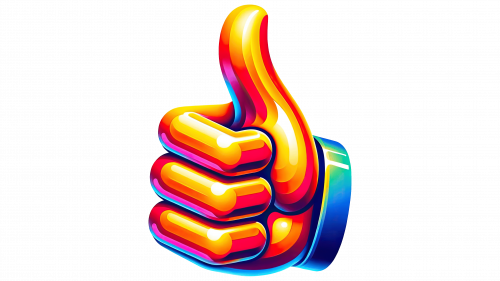A Thumbs Up Emoji 👍 represents a gesture known to many people in real communication. Sign language became part of the emoji lineup and is understandable without explanation. The symbol was added to Unicode 6.0 in 2010. The code for the sign is U + 1F44D. You can insert the picture into correspondence without access to the emoji panel by holding Alt and typing 128077 on the numeric keypad.
Meaning and use of the Thumbs Up Emoji
Originally, the sign appeared in Ancient Rome. At spectacles, especially gladiator fights, many people gathered. The rules gave the audience and the ruler the right to decide the fate of the defeated. Gestures helped to quickly know the opinion of the present. The protruded thumb (pollice verso sign) symbolized a sword. It called for delivering the blood-thrilling pleasure to the viewers – witnessing death. The direction of the thumb up or down did not matter.
In English history, the gesture symbolized – fistmele. The distance from the bowstring to the base of the bow is equal to a fist with an extended finger. Before the battle, archers gave a thumbs up as confirmation that the bow was intact and ready for battle.
The third interpretation of the gesture was given by sociobiologist Desmond Morris, who claimed that the gesture was used to seal a deal.
In Chinese culture, raised thumbs mean: “You are number one.”
In all meanings, the sign had a positive connotation, conveying pleasure, a successful decision, and full readiness.
- Everything’s great. This is a way to show without words that the issue has been positively resolved, the measures taken helped, and the trip or event was successful. During World War II, American pilots showed thumbs up to let ground assistants know that everything was normal and they could take off.
- I’m fine. At the beginning of the 20th century, during World War I, the sign was used by soldiers of the British army to communicate: everything’s fine with me. And now, the gesture symbolizes well-being and good health.
- I like it. Raising your thumb is a way to approve a decision or support an opinion. The emoji says, “I like it, I’m pleased”. It is actively used in social networks to support a post or video.
A Thumbs Up Emoji also means agreement with the interlocutor’s opinion. “I’ve thought about the issue and realized that you’re right.” The sender fully shares your understanding of the issue and considers the decisions correct.
Sometimes, the gesture represents the number one. In certain cases, it indicates hitchhiking. With a raised thumb, people stop cars on the road. The symbol also signifies a desire to surface when discussing diving. But these are rare uses of the gesture.
It’s also important to remember that in some countries, like Iraq, a thumbs up is an insult. Therefore, one should be cautious in sending the emoji to representatives of unfamiliar cultures. However, thanks to the spread of YouTube, Facebook, and other social platforms, Thumbs Up Emojis are gradually becoming positive in a global context.
Final thoughts
The Thumbs Up emoji, ubiquitous in social media, serves as a digital nod of approval. Often paralleling the function of a ‘like’ button, it’s a common way to show agreement or appreciation in the online realm. Beyond social media, it’s frequently used in personal messages to express concurrence with someone’s idea or proposal.
Historically, the thumbs-up gesture holds deep-rooted cultural significance, typically symbolizing affirmation and support. In digital communication, especially in emails or texts, it’s a versatile symbol conveying various positive responses, ranging from enthusiastic endorsements like “Great!” and “Cool!” to expressions of agreement such as “I agree” or “I support this.”
However, the Thumbs Up emoji can also take on an ironic tone, used sarcastically to imply the opposite of approval, hinting that something is actually not favorable or satisfactory.
Culturally, the meaning of the Thumbs Up symbol can vary significantly. While it’s a positive sign in many Western cultures, in other regions, like among Arabs, Turks, and Greeks, the same gesture can be interpreted as offensive or insulting. This dichotomy highlights the importance of being mindful of the cultural context when using such universal gestures in digital communication.
In a 2021 survey by Perspectus Global involving 2,000 young British adults aged 16 to 29, the Thumbs Up emoji emerged as surprisingly contentious, with 24% considering it outdated. This emoji, once universally recognized as a symbol of approval, has begun to see a shift in its acceptance, particularly among younger generations.
The debate around the Thumbs Up emoji is especially pronounced in professional settings. Many young workers view it as a form of passive-aggressive communication when encountered in work-related chats. This sentiment sparked a lively debate on platforms like Reddit, where a significant portion of Generation Z users advocated for its exclusion from workplace digital communication.
The divide in perception of the Thumbs Up emoji largely falls along generational lines. Older individuals often see it as a straightforward, positive gesture, while younger people, particularly those from Generation Z, tend to avoid it or use it only in a sarcastic manner.
Despite this generational gap, the Thumbs Up emoji still has many proponents within the digital community. Its supporters argue for its versatility and neutrality, valuing its ability to convey approval in a broad array of contexts.
If you receive a Thumbs Up Emoji – it’s a good sign. You look great, your interlocutor is ready to support your decision, and a concerning issue has been resolved positively. Overall, the image is a sign of triumph, victory, and pleasure. The drawing replaces long phrases and explanations. If there is nothing in the message but the emoji, interpret the message as: “I’m fine. I’ll be there soon.” “All settled.” “You’re awesome.” “I agree. Do as we discussed.”






